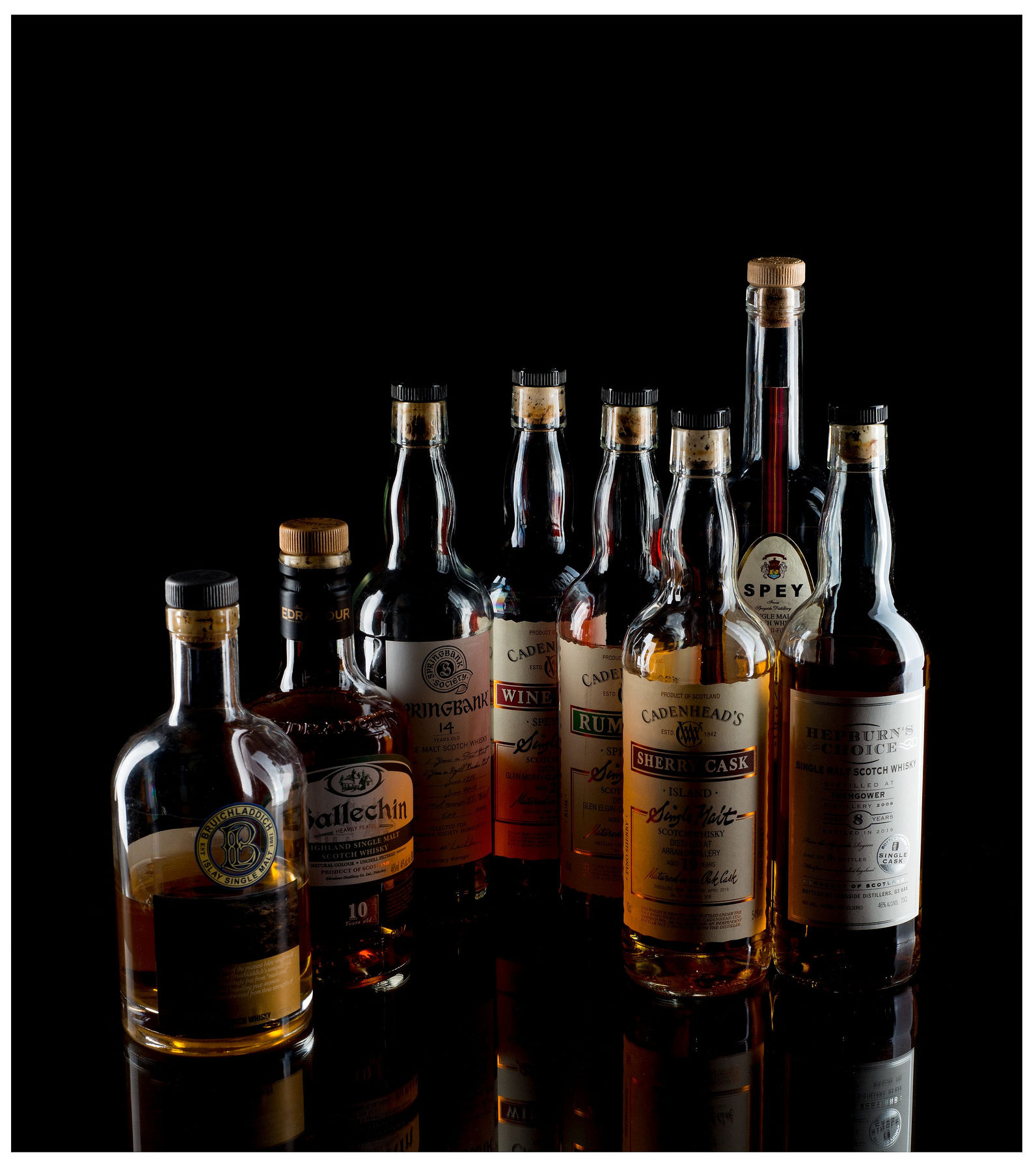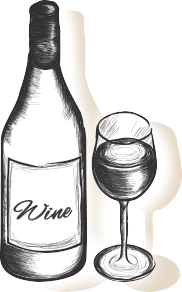So you know the difference between Bourbon and Scotch whisky is not just in name! You may even know, albeit after, literally tasting the tongue-scorching effect of drinking it neat, that Scotch is best enjoyed with a few drops of pure water. But beyond that, how much do you really know about whiskey? Today we retrace the treacherous journey this imperial drink has had to tread.
At its simplest form, whiskey is beer distilled without the hops. The distilled spirit is then aged in specially charred wooden barrels. While it is now produced all over the world, the most popular varieties are Scotch whiskey and Bourbon which is produced exclusively in Scotland and America respectively, Irish, and Canadian whiskey. We have discussed the finer differences between Scotch whiskey, Bourbon, and whiskey from everywhere else in greater detail here.
Origins of Whiskey
It may appear as if whiskey has its spiritual home in the Scottish Highlands. But, even though the Scots have some justification for laying this claim, to them distillation is an imported technology. It had been discovered ages earlier in Babylon and Mesopotamia where it was used in the production of perfumes. It was slowly improved and adapted into other applications and would only arrive on the Irish and Scottish shores, thanks to Christian monks, around the 12th century.
Some theories suggest the Scots were already distilling what they were calling ‘uisgebeatha‘, a Gaelic word for ‘water of life’. But even then, wine had been the most popular drink. Whiskey’s surge to the top was, in fact, rather fortuitous.
Because of the not so favorable weather, Europe could not produce enough grapes for large-scale wine production. Thankfully, grains like barley and corn could be produced in abundance. These were already being used to brew beer. Perhaps by experimentation, they discovered they could distill beer into whiskey.
It can thus be argued that the Scottish monks merely perfected the distillation process and adapted it to whiskey production. Along the way, the Scots became very good at whiskey production and the drink steadily evolved into their national drink.
However, the year 1541 marked an important milestone for the ‘water of life‘. King Henry Vlll decided to dissolve all monasteries, from which much of the whiskey was produced. With it, or because of it, scores of monks suddenly found themselves unemployed.
To ensure their subsistence, the newly idled monks naturally turned to the only skill they had mastered and went into private whiskey production. Before long, they were distilling whiskey in the villages, and the Scot’s love affair with whiskey blossomed.

‘Moonshine’ to the rescue
Over the next few centuries, even more whiskey was brewed and people drank on. Yet, things were to take a nasty turn at the beginning of the 18th century when England and Scotland merged into one territory. In what can only be described as an unpopular decision for the common man, the authorities imposed steep taxes on all distillers and breweries operating without proper registration. In many ways, this was a ban only disguised as a tax. To say it was bad for business would be an understatement.
As a result of the harsh taxes, production of whiskey fell drastically. Most of the small brewers were pushed underground. To avoid detection by the authorities, they started brewing at night. The illegally produced whiskies became known as ‘moonshine’. If anything, the ensuing crackdown only succeeded in promoting lawlessness. People simply got more creative and devised yet more audacious ways of smuggling and selling their illicit liquor.
The Whiskey Rebellion
The production deficit occasioned by the whiskey taxes led to whiskey shortages that were felt as far as America. The shortage was especially exposed during the American Revolution. And to prove that the Americans themselves had learnt nothing from the Scottish experience, in 1794 the federal government there introduced their own taxes throughout the whiskey value chain.
It seems the grain farmers were hit the hardest by these taxes. To show their displeasure, they soon started with their now legendary ‘Whiskey Rebellion‘. The government may have only intended to use the money collected from the taxes to pay off the swelling national debt, but their fiscal intervention caused severe dissatisfaction and fueled unprecedented rebellion within the population.
More than a commodity, a currency
The excise taxes devastated local economies which were heavily dependent on the whiskey trade. Back then, whiskey raw materials were so highly valued that Monongahela rye is reputed to have been as valued as gold. Whiskey itself was even used as a currency. The taxes were particularly detested in Pennsylvania where cash was not the preferred currency of business.
The Whiskey Rebellion marked one of the most lawless periods in American history. The insurrection had started with a few disgruntled farmers who abducted a tax collector from his bed and proceeded to strip and force-march him for miles before lynching him. It quickly grew into a large rebellion.
The reign of terror continued for three years. During this time, scores of tax collectors were attacked and humiliated. It took a 15,000-strong federal government force to finally tame the rampaging rebel army.
By then the rebel force had swelled to 5,000 men. The resulting prosecution of the captured rebels saw the first interpretation and application of treason law. This law, which classifies treason as any act of ‘levying war’ on the state including armed opposition to the enforcement of a federal law, exists to this day.
Scottish authorities sober up
After 150 years of illicit brews and smuggling, the British governing authority finally sobered up and legalized whiskey production. This liberated distillers, particularly in Scotland and Ireland, and led to a surge in production. The resulting prosperity enabled innovations, like the continuous still, that improved both the production and quality of whiskey.

As with Robert Stein and Aeneas Coffey, the names responsible for innovating and patenting the continuous still production process, Scott Andrew is remembered as the innovator of blended whiskey. To this day, whiskey blends remain one of the world’s most enjoyed alcoholic beverages.
Rather perversely, whiskey distillers will have celebrated the misfortune that befell the wine industry thanks to the Phylloxera pest. The pest devastated wine farms and seriously undermined the wine industry. Distillers may have sympathized with wine producers, but we imagine they would have been happy to fill the void and meet the extra demand that resulted from the wine shortage.
Prohibition, yet more legal sanctions
From 1823, whiskey distillers in Kentucky started producing their own whiskey which they called Bourbon. However, just as they were getting comfortable, old pains would return in 1920 thanks to the Eighteenth Amendment. It marked the start of a period that became known as the Prohibition.
The law, itself motivated by the temperance movement, outlawed the production, transportation, and sale of alcoholic beverages. Yet despite their pledge of abstinence, which was encouraged by the temperance movement, most Americans still sought alcohol and would buy distilled spirits and drink them illegally.
Against the hopes of its authors, the Eighteenth Amendment marked a dark chapter in America’s history. It gave rise to bootlegging, criminal activity and mob culture. It can even be argued that the effects have persisted since, and have shaped American culture in many ways.
The deeply unpopular law lasted until 1933 when the federal government finally bowed to public pressure and the rise in social ills. But even after the ban was lifted, distillers struggled to bring production back to pre-prohibition levels.
The whole Prohibition period is not fondly remembered, but whiskey probably emerged as its unlikely beneficiary. Certainly, one of the period’s enduring legacies is the Americans’ greater appreciation of heavy liquors like whiskey.
Since those dark days, both production and popularity of whiskey have continued to grow. Now the worldwide distilled liquor trade, of which whiskey is a major commodity, is upwards of US$60 billion.
Sources:-






